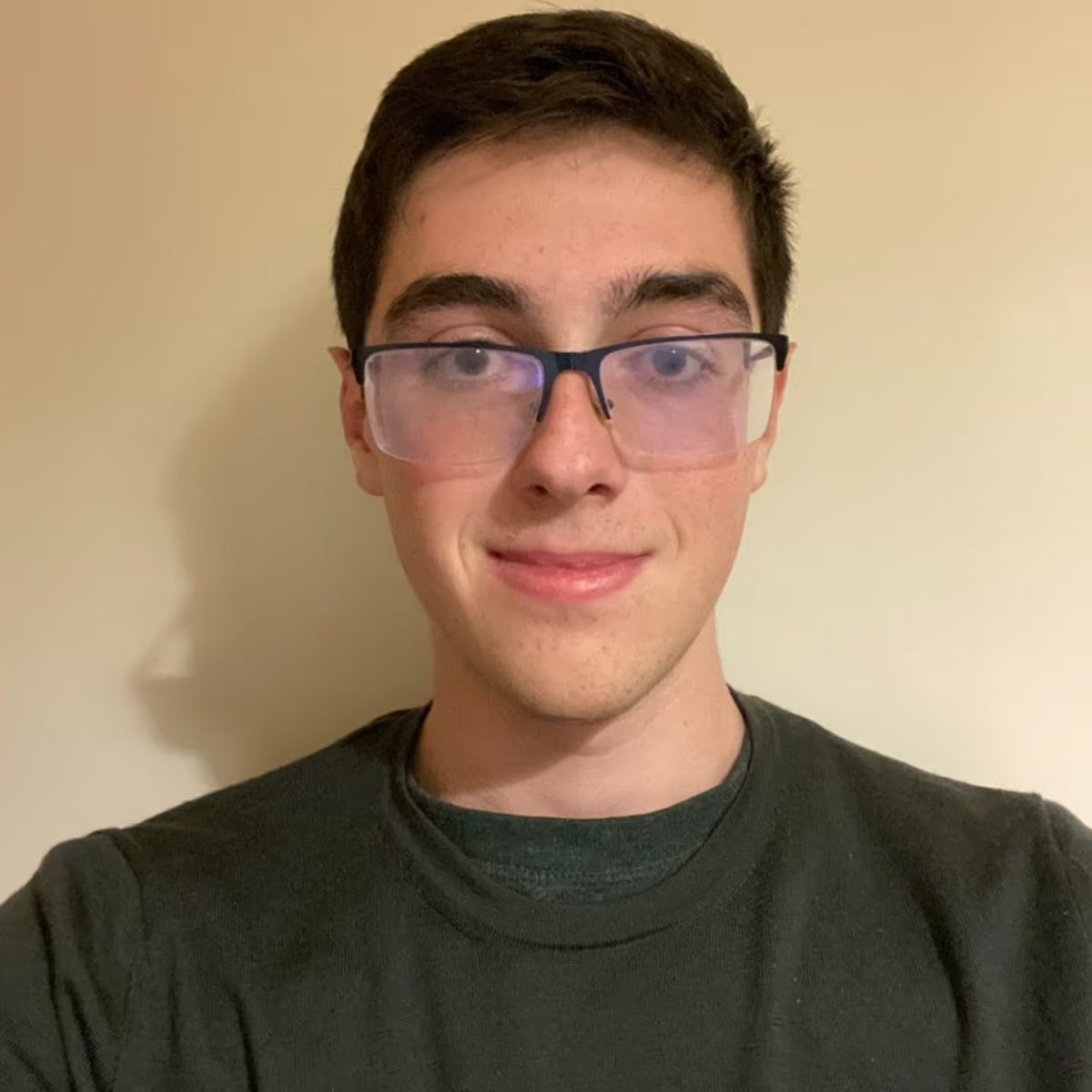By Miharu Sugie, News Staff
Growing up, Rose DeMaio, a fourth year computer science and communications dual major, knew she wanted to venture into the technical field, where becoming fluent in different coding languages like Python is key. It was natural for her to get into this kind of field like her parents, who are electrical engineers, and enroll in Northeastern’s College of Computer and Information Science (CCIS). Coming to Northeastern, though, DeMaio realized she was one of the small population of female students studying in CCIS at Northeastern and nationally.
In the 2010-2011 academic year, only 17.6 percent of computer science degree recipients were women, down from 37.1 percent in the early 1980s, according to the Department of Education and the National Center for Education Statistics.
Northeastern is no exception. While the number of women in CCIS has always remained relatively low, the number has actually slightly grown in the past few years. Richard Rasala, associate dean and director of CCIS’s undergraduate programs, said that in fall 2011, 11 percent of the undergraduates were female. The percentage has grown by seven percent as of this spring semester. Northeastern’s CCIS is the first American computer science college and according to CCIS professor Harriet Fell, six faculty members, including herself, left the math department to create the college. Four out of the six founders were women.
In an industry that has some of the highest-paying jobs for women according to Forbes’ list of Top 20 Best-Paying Jobs for Women in 2013, the number remains bleak.
“To me, it’s sad that women are underrepresented,” Rasala said.
The associate dean pointed out two explanations for why women are still a minority in the technical field.
“Women get discouraged from math and science while they’re in grades one to 12,” Rasala said. “The other reason is that there’s a tendency in technical industry to be somewhat prejudicial against women. If you’re in a company primarily run by men and the assumption is men are much better than women. There is a very deep cultural thing.”
In fact, Rasala said that the elementary school teacher of one of his daughters discouraged her from math. Many years later, Rasala said that his daughter has proven her teacher wrong, as she got her doctorate and now works at Google.
The lack of women in computer science may be attributed to the impostor syndrome, said Valerie Young, author of “The Secret Thoughts of Women: Why Capable People Suffer from the Impostor Syndrome and How to Thrive in Spite of it.”
The syndrome is widely unknown and yet very common, said Denise Cummins, an Association for Psychological Science Fellow and author and editor of multiple publications on psychology and the syndrome. Cummins said that people who experience the impostor syndrome feel chronic self-doubt, an oppressive feeling of inadequacy and lack of confidence in one’s own abilities.
Often times in advanced classes and STEM classes, such students feel that their struggle in classes means they are impostors who cannot catch up to the rest of the class, Young said. Young, who has spoken about the syndrome at many campuses, said that it is common among women taking computer science classes or working in technical fields often dominated by men.
Walking into her network security practices and foundation of information assurance classes with very few female students is nothing new to Nancy Yadav, a masters student studying information assurance in CCIS. Only two out of 13 students in her Foundation of Information Assurance class are female, and 10 to 12 out of 45 are female in her network security practices class.
“I think in some way, [a] very large male to female ratio difference can affect class environment,” Yadav said.
Yadav said that because the technical field involves innovating technology to tackle everyday problems, there is a need for women, the consumers of such technology. The more diverse a group is, the better, DeMaio said.
“They might be nuances, they might be small, or they might be apparent. or they may not show up very well … but I might have small things or you know, different behaviors that lead to a different product, so it’s still valuable all those approaches,” DeMaio said.
Gillian Smith, an interdisciplinary assistant professor for the College of Arts, Media and Design and CCIS, said that when she studied computer science at the University of California, Santa Cruz and the University of Virginia, she remembered there being “a feeling that [computer science] wasn’t a feminine subject to study.”
In an artificial intelligence class Smith once took, she remembers being the only woman in the class.
“It gets tiring to be the only person like you in the room,” Smith said.
When she worked in a tech support job before, too, no one explicitly said that women aren’t good at computing or coding. However, the stereotype that computer science was a boys club was implicit.
“People would say ‘you’re really good at it for a girl,’” Smith said. “Do you expect me to be bad at it because I’m a girl?”
Although both men and women can be affected by the impostor syndrome, Young said that it often impacts women more because research has shown that women tend to internalize mistakes and criticism. In comparison, Young said that men tend to rebound with an “I’ll show them” attitude and are more comfortable with a “fake it ‘til you make it” attitude because men are more pressured to be confident.
In a field that is cutting-edge and highly competitive, Cummins said that this feeling of incompetence is unavoidable.
Normalizing the impostor feelings is the first step to alleviating the impostor syndrome, according to Young. Students should acknowledge that they’re not the only ones with lack of self-confidence and build their confidence in small steps, like raising their hand in class a couple times every week. By doing so, students should be able to redefine competence and failure.
Smith said that she felt intimidated by her peers in the difficult technical classes she took in college. The possibility of pursuing a career in computer science did not occur to her until she realized her passion for digital art integrated in computer science and gained confidence in her ability.
To give other female computer scientists the confidence and support, DeMaio became a mentor and vice president of CISters, a student support group in CCIS. DeMaio and the other CISters strive to build a network with other female students and faculty in the college and industry professionals.
Recently, two female engineers from a local tech company visited CISters, to educate them on what it’s like to be a woman in the technical field. The associate dean said that while there is prejudice against women, there are also companies that “actively recognize more women,” which may seem contradictory.
“Women are just as talented, so why shouldn’t they be prominent?” Rasala said. “It takes time to change.”
Agnes Chan, one of the founders of CCIS and associate dean and director of CCIS’s graduate programs, said that to attract more female students into the field, there needs to be more female faculty. As of now, there are 10 active female faculty members among the 48 in CCIS. Especially in the industry’s current state, Chan said that it is imperative to add more female faculty, so they can be role models for female students.
DeMaio, who saw Facebook COO Sheryl Sandberg speak at the Grace Hopper Celebration of Women in Computing conference, said that it was empowering to see her role model show young females they can be successful in a male-dominated industry, too.
Recently, Northeastern has actively looked for faculty members who are not only qualified but also diverse, Rasala said. As many are interdisciplinary professor or are retiring, the total number of open positions are increasing. This means that there is more flexibility in hiring, therefore it is easier to reach that ideal ratio, Rasala said.
“If the ratio of women to men is low nationally, then the pool is already skewed to be more male than female before hiring,” Rasala said.
It’s a ratio which in time we hope we can balance.”
For more female faculty, there needs to be more women sticking with math and science throughout elementary, middle, high school, college and beyond, Rasala said.
Universities should start by encouraging high school girls, said Holly Jimison, a CCIS and Bouve College of Health Sciences professor.
When Jimison taught courses like medical informatics at the Oregon Health & Science University, she went to high schools to tell women and minorities about her work in hopes of sparking their interest in science and technology.
“A part of [the project] was to make it seem normal to have women in that field,” Jimison said. “The more examples you see, the less it seems like a hurdle. It seems like a natural thing to do. It’s worth a try.”








